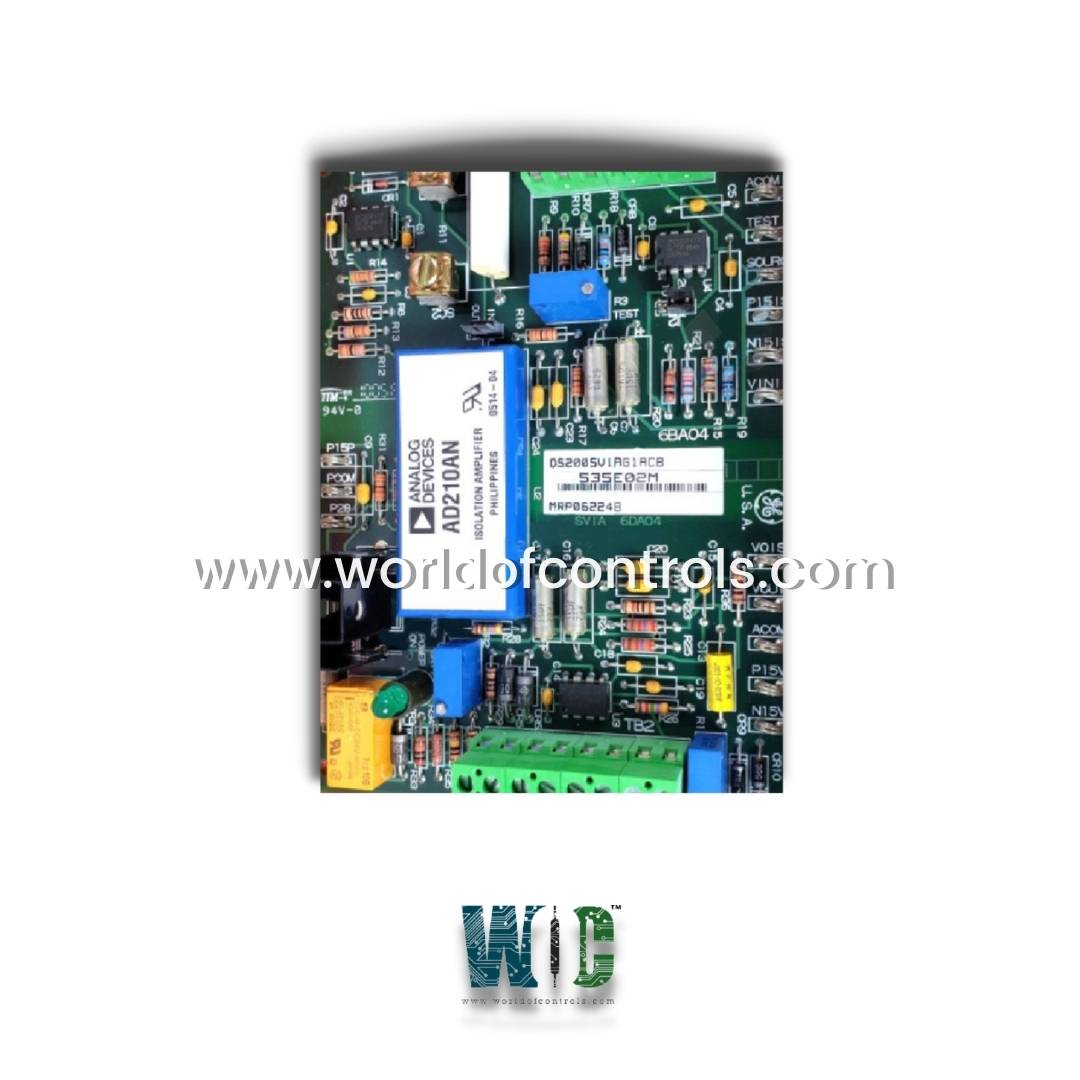
World Of Controls understands the criticality of your requirement and works towards reducing the lead time as much as possible.
DS200SVIAG1A - Shunt Isolator Board is available in stock which ships the same day.
DS200SVIAG1A - Shunt Isolator Board comes in UNUSED as well as REBUILT condition.
To avail our best deals for DS200SVIAG1A - Shunt Isolator Board, contact us and we will get back to you within 24 hours.
SPECIFICATIONS:
Part Number: DS200SVIAG1A
Manufacturer: General Electric
Series: Drive Control
Product Type: Shunt Isolator Board
Number of channels: 12
Maximum Lead Resistance: 15Ω
Potentiometers: 3 Pots
Revisions: AAA, ABB
Operating temperature: -30 to 55 degrees Celsius
Size: 8.26 cm high x 4.18 cm
Frequency: 50 or 60 Hz
Repair: 3-7 Day
Availability: In Stock
Weight: 2 lbs
Country of Origin: United States
FUNCTIONAL DESCRIPTION:
DS200SVIAG1A is a Shunt Isolator Board manufactured and designed by General Electric as part of the Drive Control Series used in GE Speedtronic Gas Turbine Control Systems. A shunt isolator board, also known as a shunt isolator module or shunt isolator circuit, is an electronic device used to measure current in a high-voltage circuit and provide electrical isolation between the measurement circuitry and the high-voltage circuit. It is commonly used in power systems and industrial applications. The primary function of a shunt isolator board is to measure the current flowing through a shunt resistor in the high-voltage circuit. A shunt resistor is a low-resistance element placed in series with the circuit, and the voltage across the resistor is proportional to the current flowing through it. By measuring this voltage, the current can be determined.
The shunt isolator board typically consists of a precision amplifier or an operational amplifier (op-amp), along with additional circuitry for signal conditioning and isolation. The high-voltage circuit is connected to the input of the shunt isolator, while the output of the isolator is connected to the measurement circuitry, which can be at a lower voltage level. The isolation provided by the shunt isolator board is important for safety and to prevent interference between the high-voltage circuit and the measurement circuitry. It helps protect the measurement equipment from high voltages and potential transients, and it ensures accurate and reliable current measurements.
FEATURES:
Shunt isolator boards come with various features that enhance their functionality and versatility in current measurement applications. Here are some common features you may find in a shunt isolator board:
Electrical Isolation: The primary feature of a shunt isolator board is electrical isolation. It provides a barrier between the high-voltage circuit and the measurement circuitry, preventing the flow of current and voltage between the two. Isolation is typically achieved using optocouplers, transformers, or other isolation techniques.
High Voltage Handling: Shunt isolator boards are designed to handle high voltages present in the measured circuit. They have components and insulation materials capable of withstanding high voltage levels without compromising the integrity of the isolation barrier.
Current Measurement Range: Shunt isolator boards may offer a wide range of current measurement capabilities to accommodate different applications. They can be designed to measure currents ranging from a few milliamperes (mA) to several kiloamperes (kA).
Accuracy and Precision: Accuracy and precision are crucial for current measurements. Shunt isolator boards often include precision amplifiers and signal conditioning circuitry to ensure accurate measurements with minimal errors and noise. They may also provide calibration adjustments to enhance measurement accuracy.
Voltage Scaling: In some cases, the output voltage from the shunt isolator may need to be scaled down to match the input requirements of the measurement circuitry. Voltage scaling features allow adjustment of the output voltage level to suit the specific needs of the application.
Temperature Compensation: Temperature variations can affect the accuracy of current measurements. Shunt isolator boards may include temperature compensation features to minimize temperature-related errors and maintain measurement accuracy across different operating conditions.
WOC has the largest stock of GE Speedtronic Drive Control System Replacement Parts. We can also repair your faulty boards. WORLD OF CONTROLS can also supply unused and rebuilt backed-up with a warranty. Our team of experts is available round the clock to support your OEM needs. Our team of experts at WOC is happy to assist you with any of your automation requirements. For pricing and availability on any parts and repairs, kindly get in touch with our team by phone or email.
What is the purpose of a shunt isolator board?
A shunt isolator board is used to measure current in a high-voltage circuit while providing electrical isolation between the measurement circuitry and the high-voltage circuit. It ensures safety, accuracy, and reliability in current measurements.
How does a shunt isolator board provide electrical isolation?
Shunt isolator boards employ techniques such as optocouplers, transformers, or other isolation methods to create a physical and electrical barrier between the high-voltage circuit and the measurement circuitry. These techniques prevent the flow of current and voltage between the two sides.
How can I ensure the accuracy of current measurements with a shunt isolator board?
To ensure accurate current measurements, follow best practices such as proper shunt resistor selection, adequate filtering, calibration or zero-adjustment procedures if provided, and regular maintenance and verification of the shunt isolator board's performance.